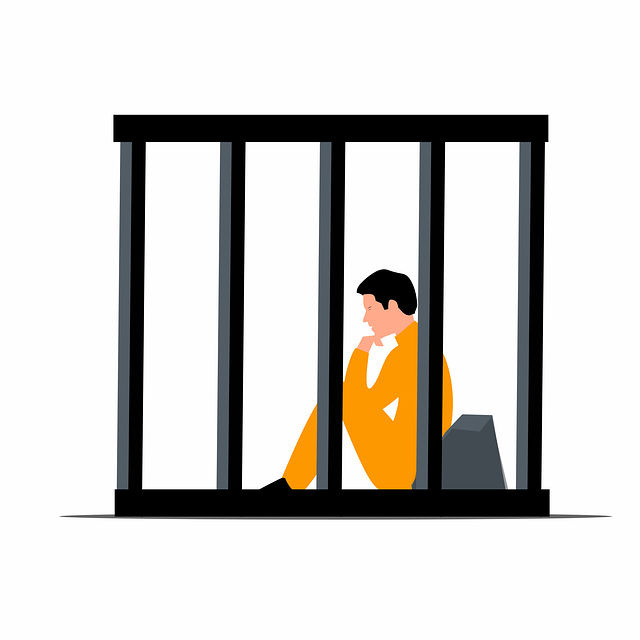The current DUI legislation, despite its intent to deter and punish impaired driving, suffers from significant loopholes leading to inconsistent justice. Outdated laws and a one-size-fits-all approach create disparities between repeat offenders and first-time culprits. Alternative sentencing options like community service, electronic monitoring devices, rehabilitation programs, and advocacy group interventions can address these loopholes. By reducing court congestion, promoting accountability, lowering recidivism rates, and enhancing public safety, these alternatives offer a more holistic solution to DUI enforcement.
In many jurisdictions, Drunk Driving (DUI) legislation has traditionally relied on strict penalties, often overlooking individual circumstances and societal factors that contribute to impaired driving. This article explores alternative sentencing options designed to address the root causes of DUI while reducing recidivism. We delve into loopholes in current legislation and examine innovative approaches such as community service, electronic monitoring, rehabilitation programs, and the role of advocacy groups. By considering these alternatives, we can navigate towards a safer and more effective system.
- Understanding Current DUI Legislation and Its Shortcomings
- Exploring Alternative Sentencing Options: Community Service
- Electronic Monitoring Devices: A New Approach to DUI Punishment
- Rehabilitation Programs: Addressing the Root Causes of Impaired Driving
- The Role of Advocacy Groups in Shaping Effective DUI Alternatives
Understanding Current DUI Legislation and Its Shortcomings

The current legislation surrounding Driving Under the Influence (DUI) offenses is designed to deter and punish drivers who operate vehicles while impaired, but it’s not without its flaws. One of the main issues lies in the various loopholes that can be exploited, leading to inconsistent outcomes for similar cases. These gaps in the law often result from outdated statutes or a one-size-fits-all approach, failing to account for unique circumstances and mitigating factors.
For example, some states may have strict penalties for first-time offenders while offering more lenient sentences for repeat DUI violators, creating an unfair advantage for those with prior convictions. Additionally, loopholes related to blood alcohol content (BAC) measurements or the interpretation of evidence can lead to questionable verdicts. Understanding these shortcomings is crucial in recognizing the need for alternative sentencing options that offer a more just and effective approach to addressing DUI cases.
Exploring Alternative Sentencing Options: Community Service

In the pursuit of addressing the issues surrounding DUI (Driving Under the Influence) cases, one often overlooked aspect is the potential for loopholes in legislation that might offer alternative sentencing options. One such option gaining traction is community service. This approach not only provides a chance for individuals to make amends but also offers a more holistic solution by diverting resources from crowded courts and prisons. Community service allows participants to contribute back to their communities, fostering a sense of responsibility and accountability while helping local organizations and initiatives.
Moreover, considering alternative sentencing like community service can be seen as a strategic response to the challenges posed by traditional punishment methods. It addresses the need for rehabilitation and reintegration rather than solely focusing on punishment, which might not effectively deter future DUI incidents. By offering alternatives, we can potentially reduce recidivism rates and create more meaningful outcomes for those affected by these laws, ultimately tightening the grip of DUI legislation without sacrificing fairness or compassion.
Electronic Monitoring Devices: A New Approach to DUI Punishment

In recent years, the traditional approach to DUI (Drunk Driving Under Influence) punishment has faced growing scrutiny due to loopholes in DUI legislation and a desire for more innovative solutions. One such alternative is the use of electronic monitoring devices, which offer a new perspective on holding offenders accountable while providing a range of benefits. These devices go beyond mere imprisonment or fines, allowing for continuous oversight without restricting mobility as traditional bail might.
By incorporating technology into sentencing, electronic monitoring provides an effective deterrent for potential DUI offenders. It enables authorities to track individuals’ movements, ensuring they adhere to specific conditions set by the court. This method addresses some of the shortcomings of conventional punishments and could potentially reduce recidivism rates by swiftly identifying any deviations from prescribed behavior, thereby promoting public safety.
Rehabilitation Programs: Addressing the Root Causes of Impaired Driving

In the pursuit of addressing the complex issue of DUI (Driving Under the Influence), Rehabilitation Programs offer a promising avenue beyond traditional penalties. These programs aim to tackle the root causes behind impaired driving, targeting not just the behavior but also the underlying factors that contribute to it. By providing comprehensive support, including counseling, education, and often, substance abuse treatment, these initiatives seek to empower individuals to make healthier choices on the road.
One of the key aspects where Rehabilitation Programs prove effective is in identifying and closing loopholes in DUI Legislation. Many conventional sentences fail to account for individual circumstances or address the underlying issues that lead to recurring impaired driving. Rehabilitation offers a more holistic approach, recognizing that effective change starts with understanding and addressing personal challenges, be it mental health issues, addiction, or other factors that might contribute to high-risk behavior behind the wheel.
The Role of Advocacy Groups in Shaping Effective DUI Alternatives

Advocacy groups play a pivotal role in shaping effective alternatives to traditional DUI sentencing. By highlighting loopholes in current legislation, these organizations drive much-needed reforms and ensure that penalties are proportional to the offense. They advocate for evidence-based solutions, such as specialized court programs and community-based interventions, which can address the underlying causes of impaired driving without resorting to harsh punishments.
Through rigorous research, public education campaigns, and direct lobbying, advocacy groups bring attention to successful alternative models that have reduced recidivism rates. They push for policy changes that prioritize rehabilitation, treatment, and support services for individuals struggling with substance abuse or mental health issues, which are often underlying factors in DUI incidents. Their efforts ultimately contribute to a more balanced and compassionate approach to DUI enforcement, ensuring that both public safety and the well-being of those impacted by these laws are prioritized.
In light of the above discussions, it’s evident that traditional DUI sentencing methods often fall short in addressing the complexities of impaired driving. By exploring alternative options like community service, electronic monitoring, rehabilitation programs, and leveraging advocacy groups, we can create a more holistic approach to deterrence and rehabilitation. Closing loopholes in DUI legislation isn’t just about stricter punishments; it’s about fostering safer communities through innovative, effective, and compassionate alternatives.






